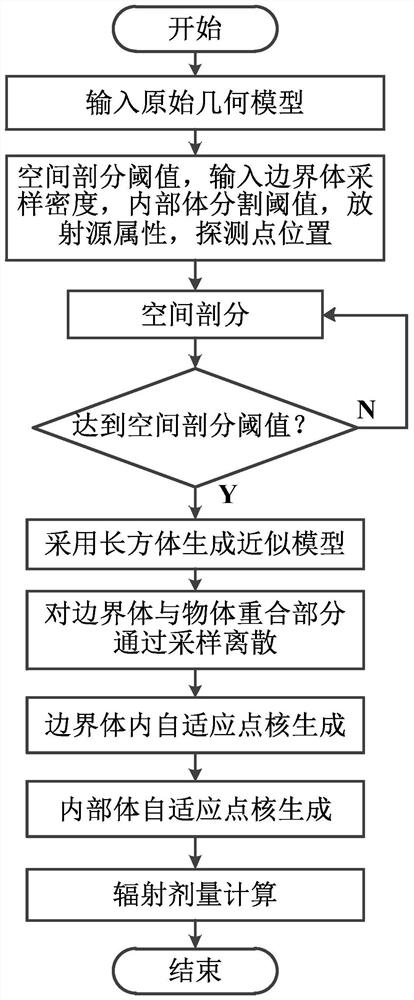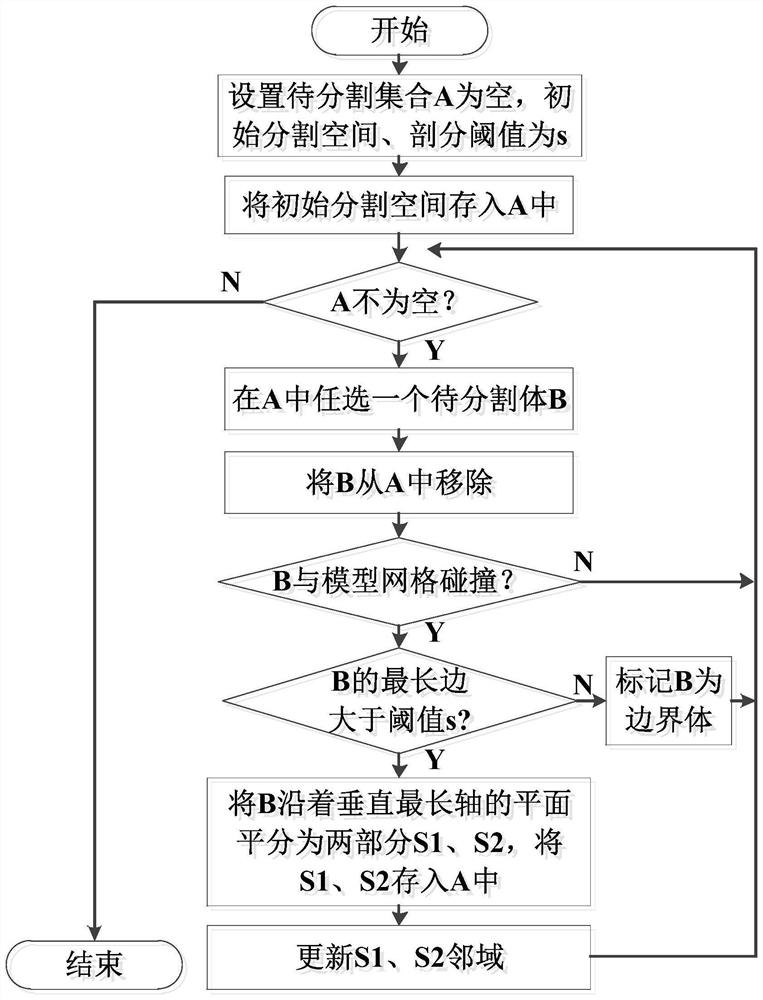An Adaptive Radiation Dose Calculation Simulation Method for Irregular Shaped Radiation Sources
A radiation dose and simulation method technology, applied in the direction of design optimization/simulation, special data processing application, etc., can solve the problem of not dealing with irregular shape geometry adaptive radiation dose calculation simulation method, inflexible dose assessment, increased calculation time, etc.
- Summary
- Abstract
- Description
- Claims
- Application Information
AI Technical Summary
Problems solved by technology
Method used
Image
Examples
Embodiment 1
[0053] (1) Establish and export the 3D geometric model of the object in the 3D modeling software as the initial input;
[0054] (2) Read the 3D model file of the object to obtain the mesh model of the object;
[0055] (3) Spatial division;
[0056] (4) Using a cuboid to approximate the object model;
[0057] (5) The cuboid on the surface of the object overlaps with the object to generate an adaptive point kernel;
[0058] (6) The cuboid segmentation inside the object generates an adaptive point kernel;
[0059] (7) Calculate the gamma radiation dose by using the point kernel method.
[0060] Spatial subdivision includes:
[0061] 1) Select the axis-aligned cuboid geometric space larger than the object as the initial segmentation body, set the threshold of space division, and divide the geometric space by binary tree. The initial division space is used as the root of the tree, and the plane perpendicular to the longest axis and located in the center of the longest axis is ...
Embodiment 2
[0086] 1. Establish the 3D geometric model of the object in the 3D modeling software and export it as the initial input;
[0087] 2. Read the 3D model file of the object and obtain the mesh model of the object;
[0088] 3. Input parameters such as space subdivision threshold, boundary volume sampling density, internal volume segmentation threshold, radioactive source material, activity, energy spectrum, and detection point position, and the algorithm automatically generates an adaptive point nucleus distribution for dose calculation. The process is as follows :
[0089](1) Space subdivision: through space subdivision, a group of axis-aligned cuboids are used to approximate the outline of the object, and at the same time, the collision detection technology in virtual reality is used to judge whether the cuboid collides with the object. If there is a collision, it means that the cuboid needs to be further subdivided. If there is no collision, the cuboid is inside or outside the...
PUM
 Login to View More
Login to View More Abstract
Description
Claims
Application Information
 Login to View More
Login to View More - R&D
- Intellectual Property
- Life Sciences
- Materials
- Tech Scout
- Unparalleled Data Quality
- Higher Quality Content
- 60% Fewer Hallucinations
Browse by: Latest US Patents, China's latest patents, Technical Efficacy Thesaurus, Application Domain, Technology Topic, Popular Technical Reports.
© 2025 PatSnap. All rights reserved.Legal|Privacy policy|Modern Slavery Act Transparency Statement|Sitemap|About US| Contact US: help@patsnap.com



